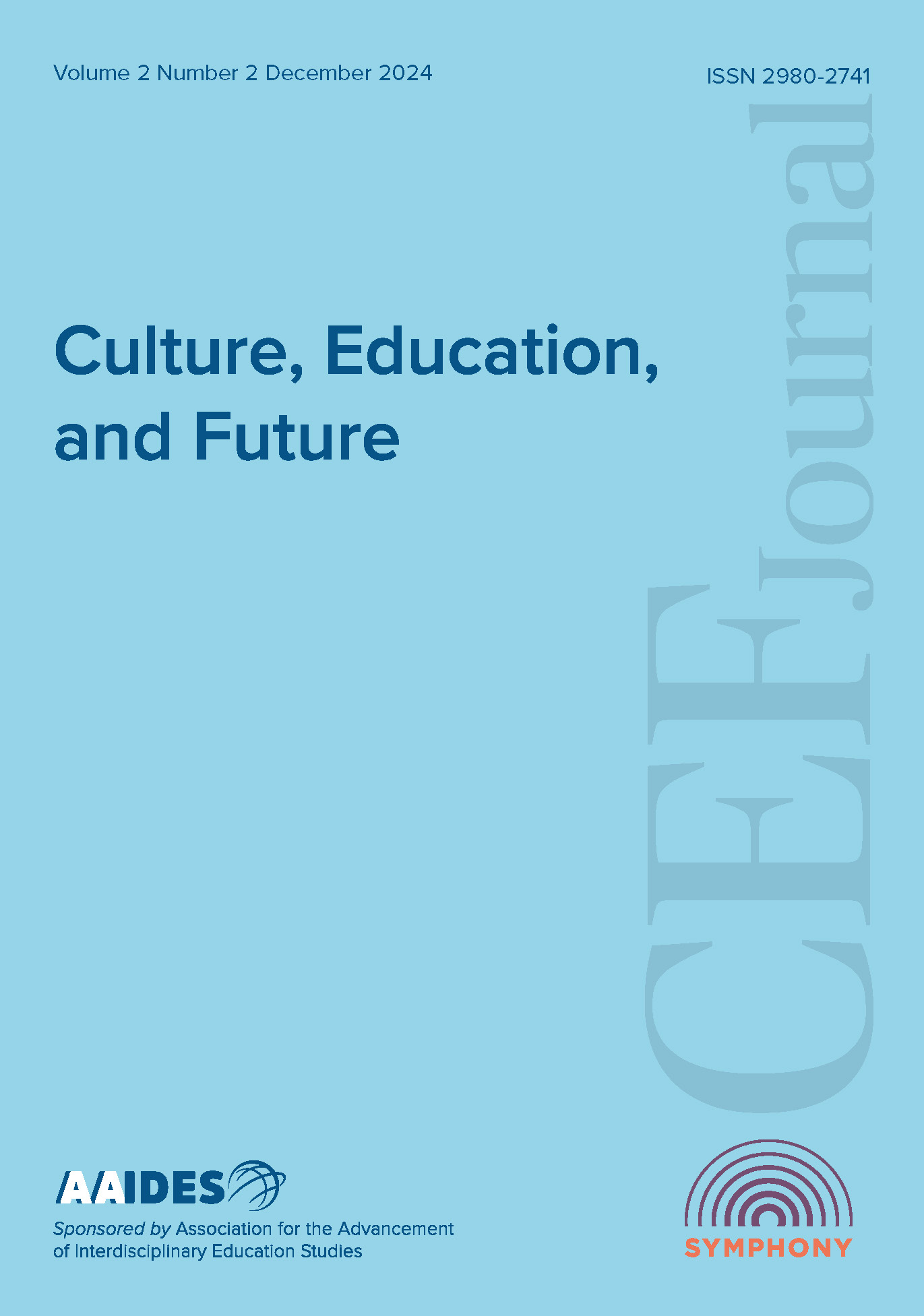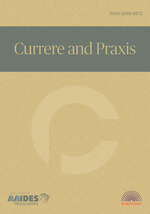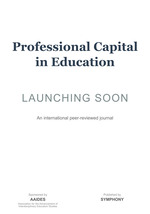The role of relational resilience in classifying childhood abuse experiences among university students
DOI:
https://doi.org/10.70116/2980274153Keywords:
abuse, neglect, relational resilience, maltreatment, university studentsAbstract
When the literature is analyzed, it is seen that childhood experiences are an important determinant for reactions in university ages. It is thought that this study will contribute to the related literature by drawing attention to the fact that childhood abuse experiences are also a determinant of university students’ relational resilience. This study examines the accuracy with which relational resilience categorizes university students who have been abused in childhood and university students who have not been abused. The research comprises 225 university students, 75 women and 150 men, aged 19-48 years, selected by convenience sampling. In the study, the Relational Resilience Scale and short information form were used to determine the relational resilience levels of the participants. Logistic regression analysis was performed on the data obtained from the data collection tools. The results of the analyses showed that relational resilience was able to classify university students with and without abuse experience with a correct prediction rate of 60.4%. It was observed that a 1-unit increase in the relational resilience variable caused a 3.30% increase in the abuse rate. This finding shows that relational resilience significantly contributes to categorizing individuals who have been victimized and those who have not been victimized. It was seen that relational resilience made a significant contribution to the classification of individuals who had been abused and those who had not been abused.
Downloads
References
Agaibi, C. E., & Wilson, J. P. (2005). Trauma, PTSD, and resilience: A review of the literature. Trauma, Violence, & Abuse, 6(3), 195-216. DOI: https://doi.org/10.1177/1524838005277438
Ahlert, I. A., & Greeff, A. P. (2012). Resilience factors associated with adaptation in families with deaf and hard of hearing children. American Annals of the Deaf, 157(4), 391-404. DOI: https://doi.org/10.1353/aad.2012.1629
Akça, Z. K. (2012). The relationship between perceived parental attitude and psychological resilience and self-esteem in young adulthood (Unpublished master’s thesis). Maltepe University, Istanbul.
Atik, E. L. (2013). The role of self-reflection and insight in the relationship between high school adolescents’ attachment styles and psychological resilience degree (Unpublished master’s thesis). Demiroglu Science University, Istanbul.
Aydogan, D. (2014). The association between relational resilience and dyadic coping with, parenting stress, and relational professional help-seeking behavior on couples (Unpublished doctoral dissertation). Gazi University, Ankara.
Bethell, C. D., Gombojav, N., & Whitaker, R. C. (2019). Family resilience and connection promote flourishing among US children, even amid adversity. Health Affairs, 38(5), 729-737. DOI: https://doi.org/10.1377/hlthaff.2018.05425
Black, K., & Lobo, M. (2008). A conceptual review of family resilience factors. Journal of Family Nursing, 14(1), 33-55. DOI: https://doi.org/10.1177/1074840707312237
Büyükşahin, A. (2006). Yakın ilişkilerde bağlanım: Yatırım modelinin bağlanma stilleri ve bazı ilişkisel değişkenler yönünden incelenmesi [Doktora Tezi, Ankara Üniversitesi.]. YÖK Tez Merkezi.
Carr, K. (2012). Examining the role of family and marital communication in understanding resilience to family-of-origin adversity. Communication Studies Theses, Dissertations, and Student Research. 23. https://digitalcommons.unl.edu/commstuddiss/23
Cicchetti, D. (2016). Socioemotional, personality, and biological development: Illustrations from a multilevel developmental psychopathology perspective on child maltreatment. Annual Review of Psychology, 67, 187-211. DOI: https://doi.org/10.1146/annurev-psych-122414-033259
Cokluk, O., Sekercioglu, G., & Buyukozturk, Ş. (2012). Multivariate statistics for social sciences SPSS and LISREL applications. Pegem.
Conolly, C. M. (2005). A qualitative exploration of resilience in long-term lesbian couples. The Family Journal: Counseling and Therapy for Couples and Families, 13(3), 266–280. DOI: https://doi.org/10.1177/1066480704273681
Conolly, J., & Lane, P. J. (2018). Vulnerability, risk, resilience: an introduction. World Archaeology, 50(4), 547-553. DOI: https://doi.org/10.1080/00438243.2019.1591025
Crawford, E., Liebling-Kalifani, H., & Hill, V. (2009). Women’s understanding of the effects of domestic abuse: The impact on their identity, sense of self and resilience. A grounded theory approach. Journal of International Women’s Studies, 11(2), 63-82.
Curtis, W. J., & Cicchetti, D. (2007). Emotion and resilience: A multilevel investigation of hemispheric electroencephalogram asymmetry and emotion regulation in maltreated and nonmaltreated children. Development and Psychopathology, 19(3), 811-840. DOI: https://doi.org/10.1017/S0954579407000405
Durán-Gómez, N., Guerrero-Martín, J., Pérez-Civantos, D., López Jurado, C. F., Palomo-López, P., & Cáceres, M. C. (2020). Understanding resilience factors among caregivers of people with Alzheimer’s disease in Spain. Psychology Research and Behavior Management, 1011-1025. DOI: https://doi.org/10.2147/PRBM.S274758
Field, A. (2005). Discovering statistics using SPSS (2nd ed.). Sage. DOI: https://doi.org/10.53841/bpspag.2005.1.56.31
Friedberg, A., & Malefakis, D. (2022). Resilience, trauma, and coping. Psychodynamic Psychiatry, 50(2), 382-409. DOI: https://doi.org/10.1521/pdps.2022.50.2.382
Gathright, E. C., Goldstein, C. M., Josephson, R. A., & Hughes, J. W. (2017). Depression increases the risk of mortality in patients with heart failure: a meta-analysis. Journal of Psychosomatic Research, 94, 82-89. DOI: https://doi.org/10.1016/j.jpsychores.2017.01.010
Hawley, D. R. (2000). Clinical implications of family resilience. The American Journal of Family Therapy, 28(2), 101-116. DOI: https://doi.org/10.1080/019261800261699
Heiman, T. (2002). Parents of children with disabilities: Resilience, coping, and future expectations. Journal of Developmental and Physical Disabilities, 14, 159-171. DOI: https://doi.org/10.1023/A:1015219514621
Holmes, M. R., Yoon, S., Voith, L. A., Kobulsky, J. M., & Steigerwald, S. (2015). Resilience in physically abused children: Protective factors for aggression. Behavioral Sciences, 5(2), 176-189. DOI: https://doi.org/10.3390/bs5020176
Howell, K. H., & Miller-Graff, L. E. (2014). Protective factors associated with resilient functioning in young adulthood after childhood exposure to violence. Child Abuse & Neglect, 38(12), 1985-1994. DOI: https://doi.org/10.1016/j.chiabu.2014.10.010
Humphreys, J. (2003). Resilience in sheltered battered women. Issues in Mental Health Nursing, 24(2), 137-152. DOI: https://doi.org/10.1080/01612840305293
Hutchinson, S. L., Afifi, T., & Krause, S. (2007). The family that plays together fares better: Examining the contribution of shared family time to family resilience following divorce. Journal of Divorce & Remarriage, 46(3-4), 21-48. DOI: https://doi.org/10.1300/J087v46n03_03
Infurna, F. J., & Luthar, S. S. (2016). Resilience to major life stressors is not as common as thought. Perspectives on Psychological Science, 11(2), 175-194. DOI: https://doi.org/10.1177/1745691615621271
Jaffee, S. R., Caspi, A., Moffitt, T. E., Polo-Tomas, M., & Taylor, A. (2007). Individual, family, and neighborhood factors distinguish resilient from non-resilient maltreated children: A cumulative stressors model. Child Abuse & Neglect, 31(3), 231-253. DOI: https://doi.org/10.1016/j.chiabu.2006.03.011
Jaffee, S. R., & Widom, C. S. (2023). Resilience to maltreatment in early adulthood does not predict low allostatic load at midlife. Annals of Behavioral Medicine, 57(6), 489-498.
Jordan, J. V. (2023). Relational resilience in girls. Springer International Publishing. DOI: https://doi.org/10.1007/978-3-031-14728-9_4
Kaynar, G. (2016). The examination of coping skills, cognitive distortions, resilience, and perceptions of social supports of people in the process of divorce (Unpublished master’s thesis). Kocaeli University, Kocaeli.
Lee, I., Lee, E. O., Kim, H. S., Park, Y. S., Song, M., & Park, Y. H. (2004). Concept development of family resilience: A study of Korean families with a chronically ill child. Journal of Clinical Nursing, 13(5), 636-645. DOI: https://doi.org/10.1111/j.1365-2702.2004.00845.x
Luthar, S. S. (1991). Vulnerability and resilience: A study of high‐risk adolescents. Child Development, 62(3), 600-616. DOI: https://doi.org/10.1111/j.1467-8624.1991.tb01555.x
Luthar, S. S., & Cicchetti, D. (2000). The construct of resilience: Implications for interventions and social policies. Development and Psychopathology, 12(4), 857-885. DOI: https://doi.org/10.1017/S0954579400004156
Maguire-Jack, K., Cao, Y., & Yoon, S. (2018). Racial disparities in child maltreatment: The role of social service availability. Children and Youth Services Review, 86, 49-55. DOI: https://doi.org/10.1016/j.childyouth.2018.01.014
Mandelli, L., Petrelli, C., & Serretti, A. (2015). The role of specific early trauma in adult depression: A meta-analysis of published literature. Childhood trauma and adult depression. European Psychiatry, 30(6), 665-680. DOI: https://doi.org/10.1016/j.eurpsy.2015.04.007
Masten, A. S. (2001). Ordinary magic: Resilience processes in development. American Psychologist, 56(3), 227. DOI: https://doi.org/10.1037//0003-066X.56.3.227
Masten, A. S. (2002). Resilience comes of age: Reflections on the past and outlook for the next generation of research. Resilience and development. Positive Life Adaptations, 281-296. DOI: https://doi.org/10.1007/0-306-47167-1_15
Masten, A. S. (2007). Resilience in developing systems: Progress and promise as the fourth wave rises. Development and Psychopathology, 19(3), 921-930. DOI: https://doi.org/10.1017/S0954579407000442
Masten, A. S., Best, K. M., & Garmezy, N. (1990). Resilience and development: Contributions from the study of children who overcome adversity. Development and Psychopathology, 2(4), 425-444. DOI: https://doi.org/10.1017/S0954579400005812
McCubbin, H. I., & McCubbin, M. A. (1988). Typologies of resilient families: Emerging roles of social class and ethnicity. Family Relations, 247-254. DOI: https://doi.org/10.2307/584557
McLaughlin, K. A., Koenen, K. C., Hill, E. D., Petukhova, M., Sampson, N. A., Zaslavsky, A. M., & Kessler, R. C. (2013). Trauma exposure and posttraumatic stress disorder in a national sample of adolescents. Journal of the American Academy of Child & Adolescent Psychiatry, 52(8), 815-830. DOI: https://doi.org/10.1016/j.jaac.2013.05.011
Meng, X., Fleury, M. J., Xiang, Y. T., Li, M., & D’arcy, C. (2018). Resilience and protective factors among people with a history of child maltreatment: A systematic review. Social Psychiatry and Psychiatric Epidemiology, 53, 453-475. DOI: https://doi.org/10.1007/s00127-018-1485-2
Ozbay, Y., & Aydogan, D. (2013). Family resilience: Growing against all the odds of exceptionality. Journal of Social Policy Studies, 7(31), 129-146.
Ozcan, B. (2005). Comparison of high school students whose parents are divorced and whose parents are together in terms of resilience characteristics and protective factors (Unpublished master’s thesis). Ankara University, Ankara.
Patterson, J. M. (2002). Integrating family resilience and family stress theory. Journal of Marriage and Family, 64(2), 349-360. DOI: https://doi.org/10.1111/j.1741-3737.2002.00349.x
Rodman, A. M., Jenness, J. L., Weissman, D. G., Pine, D. S., & McLaughlin, K. A. (2019). Neurobiological markers of resilience to depression following childhood maltreatment: The role of neural circuits supporting the cognitive control of emotion. Biological Psychiatry, 86(6), 464-473. DOI: https://doi.org/10.1016/j.biopsych.2019.04.033
Rutter, M. (1986). Meyerian psychobiology, personality development and the role of life experience. American Journal of Psychiatry, 143, 1077-1087. DOI: https://doi.org/10.1176/ajp.143.9.1077
Rutter, M. (1990). Commentary: Some focus and process considerations regarding effects of parental depression on children. Developmental Psychology, 26(1), 60. DOI: https://doi.org/10.1037/h0092669
Rutter, M. (2007). Resilience, competence, and coping. Child Abuse & Neglect, 31(3), 205-209. DOI: https://doi.org/10.1016/j.chiabu.2007.02.001
Rutter, M., Tuma, A. H., & Lann, I. S. (1988). DSM-III-R: Assessment and diagnosis in child psychopathology. Guilford.
Sixbey, M. T. (2005). Development of the family resilience assessment scale to identify family resilience constructs. University of Florida.
Tabachnick, B. G., & Fidell, L. S. (2013). Using multivariate statistics (Vol. 6, pp. 497-516). Pearson.
Taylor, C. A., Guterman, N. B., Lee, S. J., & Rathouz, P. J. (2009). Intimate partner violence, maternal stress, nativity, and risk for maternal maltreatment of young children. American Journal of Public Health, 99(1), 175-183. DOI: https://doi.org/10.2105/AJPH.2007.126722
Tencer, H. L. (2002). Verbal and emotional abuse as predictors of change in close friendship in early adolescence. Society for Research in Adolescence, 4, 771-779.
Terzi, S. (2008). The relationships between resilience and internal protective factors in university students. Hacettepe University Journal of Education, 35(35), 297-306.
Toth, S. L., & Cicchetti, D. (2013). A developmental psychopathology perspective on child maltreatment. Child Maltreatment, 18(3), 135-139. DOI: https://doi.org/10.1177/1077559513500380
Venter, N., & Snyders, R. (2009). Resilience in intimate relationships. New Voices in Psychology, 5(1), 63-85.
Walsh, F. (1996). The concept of family resilience: Crisis and challenge. Family Process, 35(3), 261-281. DOI: https://doi.org/10.1111/j.1545-5300.1996.00261.x
Walsh, F. (1998). The resilience of the field of family therapy. Journal of Marital and Family Therapy, 24(3), 269. DOI: https://doi.org/10.1111/j.1752-0606.1998.tb01084.x
Walsh, F. (2002). A family resilience framework: Innovative practice applications. Family Relations, 51(2), 130-137. DOI: https://doi.org/10.1111/j.1741-3729.2002.00130.x
Watters, E. R., Aloe, A. M., & Wojciak, A. S. (2023). Examining the associations between childhood trauma, resilience, and depression: A multivariate meta-analysis. Trauma, Violence, & Abuse, 24(1), 231-244. DOI: https://doi.org/10.1177/15248380211029397
Werner, E. E. (1989). Vulnerability and resiliency: A longitudinal perspective. Children at risk: Assessment, Longitudinal Research and Intervention, 158-172.
Whisman, M. A. (2014). Dyadic perspectives on trauma and marital quality. Psychological Trauma: Theory, Research, Practice, and Policy, 6(3), 207. DOI: https://doi.org/10.1037/a0036143
Wilson, G. A., Hu, Z., & Rahman, S. (2018). Community resilience in rural China: The case of Hu Village, Sichuan Province. Journal of Rural Studies, 60, 130-140. DOI: https://doi.org/10.1016/j.jrurstud.2018.03.016
Wingo, A. P., Wrenn, G., Pelletier, T., Gutman, A. R., Bradley, B., & Ressler, K. J. (2010). Moderating effects of resilience on depression in individuals with a history of childhood abuse or trauma exposure. Journal of Affective Disorders, 126(3), 411-414. DOI: https://doi.org/10.1016/j.jad.2010.04.009
Wolin, S. J., & Wolin, S. (1993). The resilient self: How survivors of troubled families overcome adversity. Villard Books.
WHO. (2024). Preventing child maltreatment: A guide to taking action and generating evidence. WHO. Retrieved 07 September, 2024 from https://iris.who.int/handle/10665/43499
Wright, M. O. D., & Masten, A. S. (2015). Pathways to resilience in context. Youth Resilience and Culture: Commonalities and Complexities, 3-22. DOI: https://doi.org/10.1007/978-94-017-9415-2_1
Yıldırım, A., & Şimşek, H. (2008). Qualitative research methods in social sciences. Seckin.
Yoon, S., Cage, J., Pei, F., & Barnhart, S. (2021a). Risk and resilience factors for psychobehavioral symptom trajectories among child welfare–involved youth. Journal of Interpersonal Violence, 36(9-10), NP5281-NP5303. DOI: https://doi.org/10.1177/0886260518799485
Yoon, S., Maguire-Jack, K., Knox, J., & Ploss, A. (2021b). Socio-ecological predictors of resilience development over time among youth with a history of maltreatment. Child Maltreatment, 26(2), 162-171. DOI: https://doi.org/10.1177/1077559520981151
Downloads
Published
How to Cite
Issue
Section
License
Copyright (c) 2024 Symphony

This work is licensed under a Creative Commons Attribution 4.0 International License.














